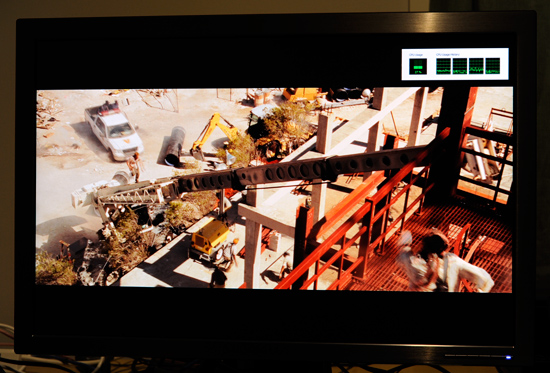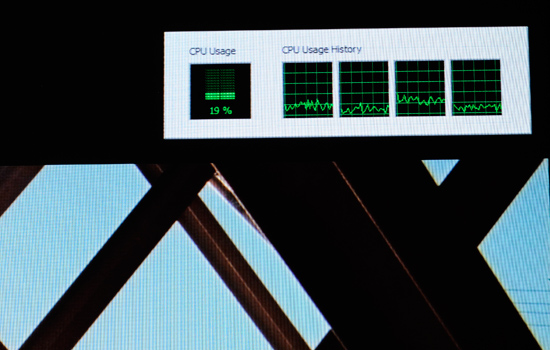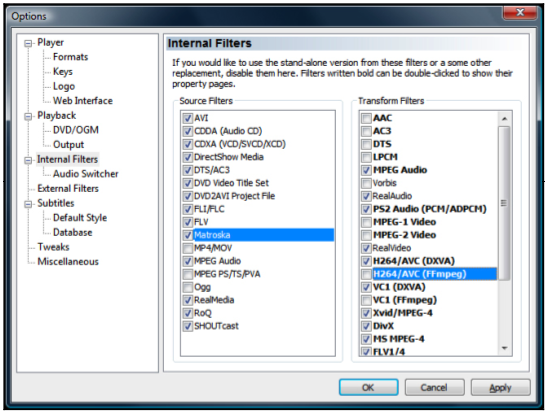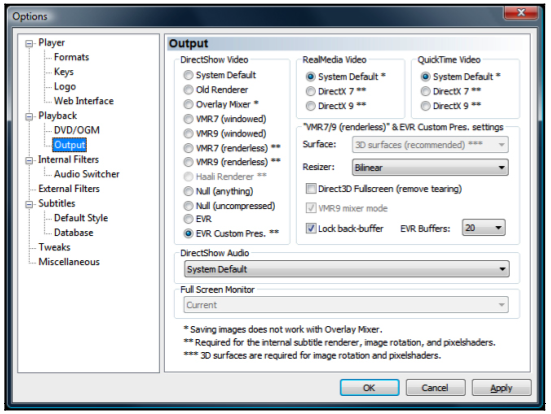Zotac's Ion: The World's First mini-ITX Ion Board
by Anand Lal Shimpi on May 12, 2009 12:00 AM EST- Posted in
- GPUs
Blu-ray Playback: It Works Quite Well
I tried using the Zotac Ion to watch Blu-ray movies, after all, that’s one of the major reasons to get this thing over the much cheaper Intel alternative. NVIDIA’s Ion chipset (aka GeForce 9300) can fully decode H.264 and thus make high definition movies watchable on the otherwise incapable Atom CPU.
Anything that supports NVIDIA’s PureVideo HD will work on the Ion board, in this case I used Cyberlink’s PowerDVD 9 Ultra - the latest version off of Cyberlink’s website. I fired up Casino Royale and watched, the CPU utilization across all four virtual cores (two physical cores) ranged between 19 - 27% on average. At times I saw steady peaks at 36% and the highest I ever saw was 50% in an unexpectedly stressful scene. With the dual-core Atom, I never saw any dropped frames.

The high CPU utilization is simply due to the content decryption required by every copy protected Blu-ray disc, the actual decode is being done completely in hardware. If you playback an unencrypted Blu-ray disc you get CPU utilization in the 10 - 14% range.

Earlier versions of PowerDVD were not well optimized for Atom, but the latest updates to PowerDVD 8 and PowerDVD 9 ensure smooth playback on even a single-core Atom/Ion system (I used an older version of PowerDVD in my short lived Ion Blu-ray Investigation which was the cause for poor performance in those tests). Note that at one point in my testing I saw the CPU usage hit 50% on the Atom 330, which means it would be at 100% with an Atom 230. The spike only lasted for a second or two but it's possible for a single-core Atom setup to stutter in situations like that if you have a background task running at the same time.
You can even get hardware acceleration using the Ion board under Media Player Classic - Home Cinema. Using the latest stable build of MPC-HC you simply need to go to the Options menu (View -> Options) and configure a few items. Click on Output then select EVR or EVR Pres. if you want to enable subtitles.

Then click on the Internal Filters option and disable all FFmpeg transform filters, enable all DXVA transform filters and enable the Matroska source filter (for playing back MKVs).

If you configure MPC-HC as I described above you'll get full hardware acceleration on the Ion board. This is a great way of watching your own ripped content. Without encryption CPU utilization ends up being in the 10 - 14% range, allowing you to even do things in the background while you're watching a video. I would caution you against doing too much however, so much as scrolling the volume slider up/down will cause the video playback to stutter. You're probably better off just being happy that you're not dropping any frames and not touch anything while you enjoy your movie.










93 Comments
View All Comments
bobvodka - Wednesday, May 13, 2009 - link
While I know it's only at the RC stage, it might be intresting to see how this plays with Win7, if only as a nod to the future and with regards to how it performs against XPlemon8h8ead - Wednesday, May 13, 2009 - link
Thanks for a good job in optimizing control over the environment. It is not easy to create apples-to-apples tests.I would have been interested in seeing the same H/W configurations running one of the popular Linux distros (E.g. Ubuntu). It has been my observation that the Linux kernel multithreads more efficiently than Windows but those were purely compute-bound applications that I was comparing and the benchmarks are 8 years old on very dated H/W platforms (obsolete). I realize that both Windows and Linux kernels have improved vastly since then.
Is your HTPC speced out here anywhere? Just curious.
sysdump - Wednesday, May 13, 2009 - link
I want to see HD H264 content decoded using CUDA! To see if it can handle non DXVA compatible videos.mvrx - Wednesday, May 13, 2009 - link
I've been using an Atom 330 system as a DD-WRT router.. cost me only $150 and is probably 15x faster than any Dlink or linksys on the market.. People really need to pay attention to this possibility.mindless1 - Wednesday, May 13, 2009 - link
Presumably you're comparing against Dlink and Linksys consumer grade routers, that are meant for light use. In such a scenario why would it need to be 15X faster and had you done latency tests that quantify the difference? Checking latency on a router running DD-WRT I find the router latency insignificant compared to the rest of the nodes along a typical connection, and that when the router is even doing QOS concurrent to P2P transfers.I'd think a board like this to be quite overkill for mere routing, it might be nice though to have a few more features possible like DNS caching, web proxy, advanced firewall rules, web/mail server.
JoKeRr - Wednesday, May 13, 2009 - link
For $80 with 3 SATA ports and add in some ram and 3 hard disks, this will make a decent NAS file server with linux installed.I use a PS3 in the living room, it used to be a old mac mini. Right now I definitely miss the iPhone remote with iTune in the mac mini. PS3 is great for movies, but for not so with web content. I use PS3 media server to stream movies from my PC to the PS3, it also performs transcoding on the content that PS3 doesn't recognize (mkv). My desktop is P4 3.0C overclocked to 3.5GHz, and it has no problem transcoding mkv movies in 720p resolution (max bit rate I saw was around 15Mbps), I would really like to know how the dual core atom performs on the transcoding front with PS3 media server. If it works well, it will be a very nice compliment to the PS3 system.
Thank you!
NullSubroutine - Saturday, May 16, 2009 - link
I thought I'd like to throw out that that with MKV files you can mux them (like with tsMuxer) to MT2S files which can then be renamed to MP4 to play on PS3.Muxing takes less than a minute usually and doesn't convert the video just takes it out of the MKV container file.
It may be easier to do this with your files than have them transcode on the fly.
ViRGE - Tuesday, May 12, 2009 - link
If only it had component out. The HDMI port is nice, but I had a RP-CRT; I'd love to replace my HTPC box with something like this, but the lack of component out is a killer.moozoo - Tuesday, May 12, 2009 - link
I believe the ION platform supports CUDA.Please run some CUDA benchmarks and those H264 video encodings using BadaBOOM on this motherboard.
The ION chipset (MCP79) has very low latency between the GPU and the main memory. This makes it possible to perform audio functions on the GPU.
See http://forums.nvidia.com/index.php?showtopic=92290">http://forums.nvidia.com/index.php?showtopic=92290
JarredWalton - Tuesday, May 12, 2009 - link
From the conclusion:"I did try some CUDA applications on the Zotac Ion board and they were definitely faster than using the CPU alone. While our x264 test managed around 12 fps on the Zotac Ion, using Badaboom I was able to encode at just under 20 fps."